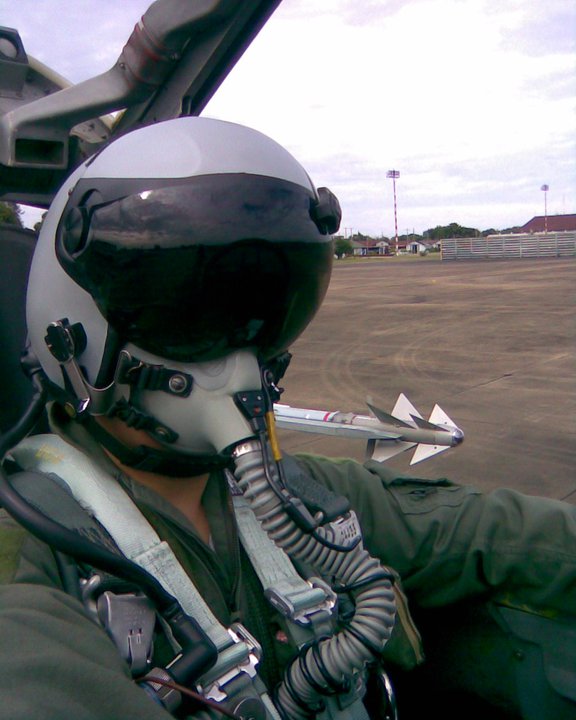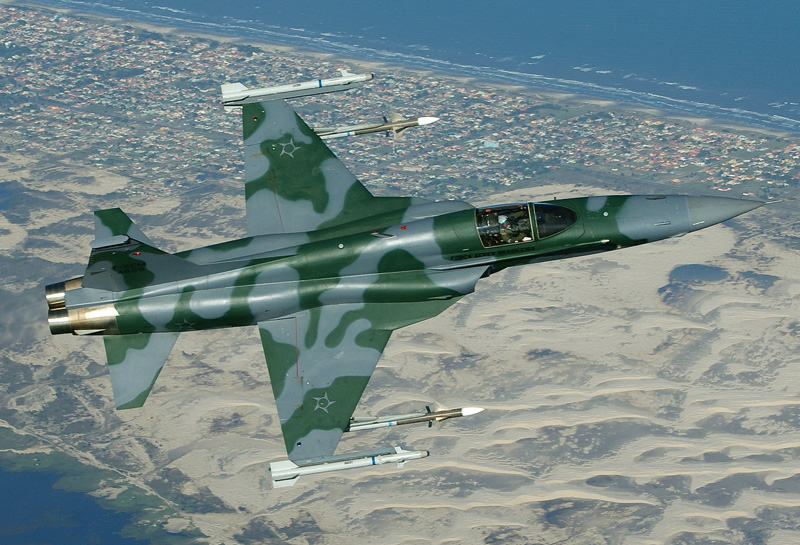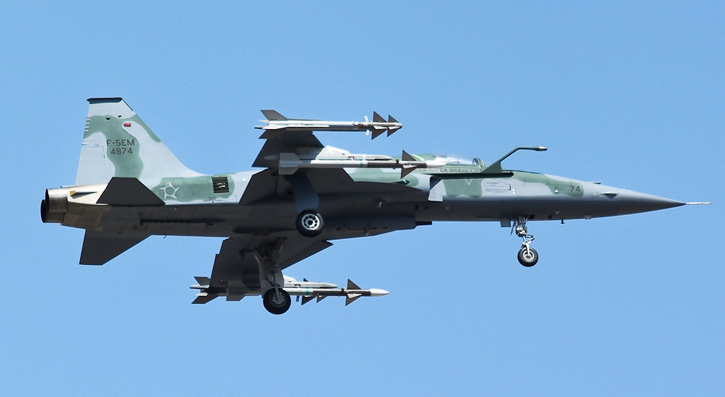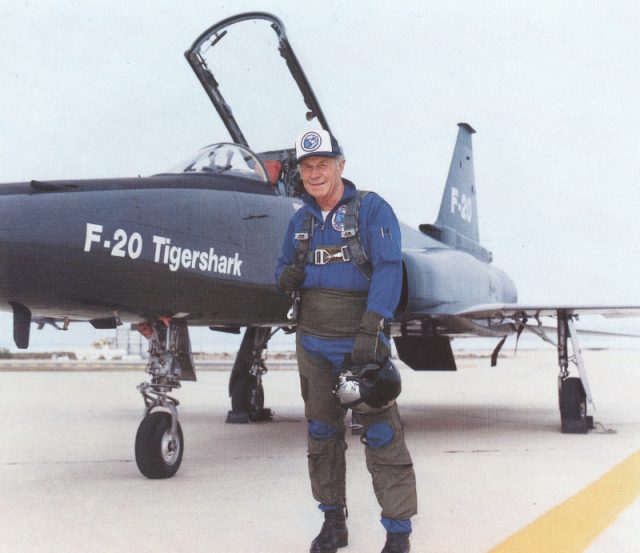
Posted on 10/23/2014 10:28:05 AM PDT by sukhoi-30mki
Israel's Elbit Systems announced yesterday that it was awarded contracts from an Asian country in a total amount of approximately $85 million.

A pilot of the Royal Thai Air Force preparing for a mission in an upgraded F-5T, wearing a DASH helmet. Note the Python IV missile on the wingtip.
Israel’s Elbit Systems announced yesterday that it was awarded contracts from an Asian country in a total amount of approximately $85 million; the majority of the amount will be for an avionic upgrade of F-5 aircraft, to be performed over a three year period. The balance is for the supply of electro-optic and communications systems.
While the name of the customer air force was not mentioned, Asian media sources have indicated the program is a follow-on phase of the F-5E Tigris – the modernized version of the Northrop F-5E operated with 211 squadron of the Royal Thai Air Force. Elbit Systems has already performed a modernization of part of the Thai F-5E fleet, and the current contract is likely to follow-on with the two-seater F-5F.
“We are proud to have been selected to perform this aircraft upgrade program, building on our vast know-how and experience in F-5 avionics modernization projects.” Bezhalel (Butzi) Machlis, President and CEO of Elbit Systems commented, ”Asia-Pacific is a very important market for Elbit Systems, and we are pleased to be awarded further programs in the region, which programs benefit from the synergies across the various parts of our organization. We have witnessed a growing demand for upgrades of this nature, and we trust that further customers will follow, benefiting from a mature aircraft upgraded with market leading technologies”.
Elbit Systems has performed various F-5 upgrades in the past. The most comprehensive plan is the ongoing F-5EM/FM in Brazil, where 46 aircraft have been upgraded with SELEX Grifo F radars, INS/GPS-based navigation, Python IV and Derby air-to-air missiles, advanced electronic warfare systems, targeting pods etc. The program also extended the aircraft life span for 15 years. Among the avionics upgrades were mission computers, advanced glass cockpits featuring 3-color displays, DASH IV Helmet mounted display sight, weapon delivery and navigation systems, etc.
Under the F-5T Tigris program launched in 2003 Elbit Systems performed upgrades to 12 single seat and two twin-seat F-5E/F fighters. The Thai configuration is similar to the Brazilian, differing in the type of radar used – as the F-5T uses the Israeli Elta ELM2032.
RTAF planned to upgrade 31 aircraft operated by 701 and 211 squadrons, but lack of funds reduced the amount to 15. With the introduction of JAS-39 Gripen with 701 squadron, the F-5T now operational only with 211 squadron are to remain in service at least until the early 2020.
Thailand is one of the last remaining air forces in Asia operating the F-5 jet fighter. Once considered the mainstay of the South Vietnamese, South Korean, Singapore and Taiwan air forces, these fighters are now being retired, replaced with versions of locally produced fighter/trainers such as AIDC (a locally built F-5 variant) in Taiwan and F/A-50 in South Korea. Indonesia, Philippines and Vietnam are also maintaining some F-5Es in storage but the operational capability of these aircraft is unknown. In Singapore, the F-5s were replaced mostly with F-16s and F-15SG, leaving few of the aircraft to be used for operational training.

The Brazilian Air Force has upgraded 46 Tiger II fighters into the F-5EM configuration, armed with Sidewinder and Derby missiles.
 This configuration shows the F-5EM armed with Python IV and Derby missiles.
This configuration shows the F-5EM armed with Python IV and Derby missiles.
I love those planes.
The F/A-50 (T-50, TA-50) in Korea is most certainly not a variant of the F-5. It more resembles the Korean variant of the F-16. It is used as a trainer to train Korean pilots for their F-15’s and F-16’s. They even tried or are trying to market it to the US as a trainer.
On the Wiki page I don’t think the words “F-5 Tiger” even appear once.
http://en.wikipedia.org/wiki/KAI_T-50_Golden_Eagle
Worked on F-5’s in the mid-70’s. They were used in training exercises to simulate Russian Migs against F-15’s. They were so good that the USAF F-15 squadron made them paint bright yellow stipes on the F-5’s so the F-15 pilots could see them. Somehow, I always doubted the Russians would have been so accomodating!
I’ve always thought they were a particularly beautiful variety of fighter jet.
Was at an airshow in Lakeland a couple of years ago. A member of the Top Gun Aggressor squadron was there with his F5. Loved the plane. He said it’s one of the few fighters left where the flight controls actually move the control surfaces rather than being inputs to a computer.
At this point, those birds must have serious G-load limitations.
You would have to retro fit of burner or give up on breaking Mach.
I did an internship with an outfit making electronic engine controls in the late 90s. They still had a line open building some some positively ancient looking circuits. They were for folks still flying J58s that needed the same old vintage 50’s gear, but newbuilt replacement parts. Certainly falls under the ‘if it ani’t broke’ clause in engineering.
They really should reengine the things. Maybe go for a single F404 like on the Hornet and Gripen.
But calling it a Tiger III is just way too boring. Need to come up with something new and snazzy, identifies it as a different breed while still paying homage to it’s F-5 lineage.
Wait! I got it! How about “TIGERSHARK”?

And Chuck was well compensated for approving.
Not that the Tigershark wasn’t a hot little aircraft. But it was clear that Chuck was being way too ... effusive ... in his praise of it.
Disclaimer: Opinions posted on Free Republic are those of the individual posters and do not necessarily represent the opinion of Free Republic or its management. All materials posted herein are protected by copyright law and the exemption for fair use of copyrighted works.